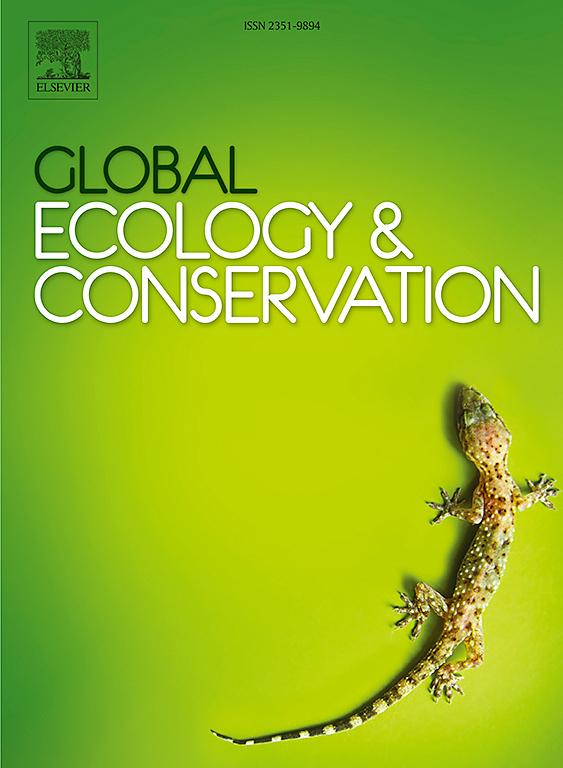与生态修复工程相关的生态网络动态量化——以西南地区为例
IF 3.4
2区 环境科学与生态学
Q1 BIODIVERSITY CONSERVATION
引用次数: 0
摘要
生态修复工程在遏制当前生态退化趋势、修复生态网络、保障区域生态安全方面发挥了重要作用。在中国,实施了大量大规模、高投资的项目,强调系统保护和整体修复的理念。然而,在大规模生态修复的背景下,生态修复如何提高生态网络的有效性尚不清楚。为解决这一问题,本文以西南典型喀斯特地区柳充河流域为研究对象,对2016-2018年生态修复工程相关的生态网络变化进行了评价。利用形态空间格局分析(MSPA)模型识别生态来源,利用Linkage Mapper工具构建生态网络,并进一步量化生态网络关键特征的变化。结果表明,2010年、2015年和2020年分别确定了32个、26个和38个生态源点。在生态阻力值保持相对稳定的情况下,生态廊道的数量和长度明显增加,特别是在河道整治工程(RCRP)和水源修复工程(WSRP)的影响下。α、β和γ指数分别提高了15.31 %、11.18 %和8.33 %,表明网络电路、结构可达性和节点连通性得到改善。这些增强表明了向更综合、更有弹性的生态网络的转变。研究结果表明,生态修复可以促进生态网络的完整性,对系统保护和综合修复具有积极作用。本文章由计算机程序翻译,如有差异,请以英文原文为准。
Quantifying the ecological network dynamics associated with ecological restoration projects: A case study in Southwest China
Ecological restoration projects have played an important role in curbing current ecological degradation trends, restoring ecological networks, and ensuring regional ecological security. In China, numerous large-scale and high-investment projects have been implemented, emphasizing the concepts of system protection and integrative restoration. However, in the context of ecological restoration at a large scale, how ecological restoration improves the effectiveness of the ecological network is still unclear. To address this issue, we selected the Liuchong River Basin in a typical karst region of Southwest China to assess the ecological network change associated with ecological restoration projects during the period 2016–2018. The Morphological Spatial Pattern Analysis (MSPA) model was applied to identify the ecological sources, the Linkage Mapper tool was used to construct an ecological network, and changes in key features of the ecological network were further quantified. The results showed that there were 32, 26, and 38 ecological source points identified in 2010, 2015, and 2020, respectively. While ecological resistance values remained relatively stable, the number and length of ecological corridors increased significantly, particularly under the influence of the River Channel Regulation Project (RCRP) and the Water Source Restoration Project (WSRP). The α, β, and γ indices increased by 15.31 %, 11.18 %, and 8.33 %, respectively, indicating improved network circuitry, structural accessibility, and node connectivity. These enhancements suggest a shift toward a more integrated and resilient ecological network. Our results suggest that ecological restoration can promote the integrity of ecological networks and has a positive effect on system protection and integrative restoration.
求助全文
通过发布文献求助,成功后即可免费获取论文全文。
去求助
来源期刊

Global Ecology and Conservation
Agricultural and Biological Sciences-Ecology, Evolution, Behavior and Systematics
CiteScore
8.10
自引率
5.00%
发文量
346
审稿时长
83 days
期刊介绍:
Global Ecology and Conservation is a peer-reviewed, open-access journal covering all sub-disciplines of ecological and conservation science: from theory to practice, from molecules to ecosystems, from regional to global. The fields covered include: organismal, population, community, and ecosystem ecology; physiological, evolutionary, and behavioral ecology; and conservation science.
 求助内容:
求助内容: 应助结果提醒方式:
应助结果提醒方式:


